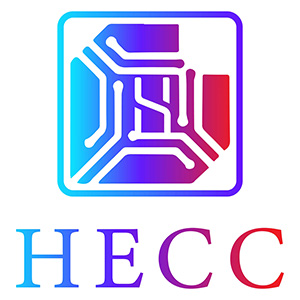In today's rapidly advancing technology, the Internet of Things (IoT) is becoming a driving force for change with its profound connectivity and clever data processing capabilities. Original Equipment Manufacturers (OEMs) stand at a critical crossroads, not only needing to think about how to integrate the power of IoT into existing products and improve intelligence levels, but also exploring how to leverage this power to drive innovation and progress in the entire industry.
Utilize ready-made modules to quickly transform the Internet of Things
In this dynamic and rapidly changing technological field, the Internet of Things is not just about interconnectivity between devices. It is a comprehensive system that improves efficiency, solves problems, and even prevents problems from occurring by collecting, analyzing, and applying data. So, how do manufacturers achieve this transformation?
The key choice often lies in whether to develop independently or procure externally. Although OEMs have the ability to build their own systems, this often requires a significant amount of time, resources, and professional knowledge. By contrast, choosing ready-made solutions in the market, such as System Modules (SoM) or Single Board Computers (SBC), can greatly simplify the development process.
These pre built modules not only simplify the design and implementation process, but also reduce complex compliance barriers through their pre certified wireless communication capabilities. Taking the complexity of RF (radio frequency) design as an example, using pre certified wireless modules can significantly shorten product launch time and reduce the risks and costs that may be encountered during the certification process.
However, the true power of the Internet of Things lies not only in hardware; It also depends on data and connectivity. By combining IoT devices with powerful cloud platforms, manufacturers can collect valuable data from their products, which can be analyzed and used to improve operations, increase efficiency, or create new business opportunities.
It is worth noting that OEMs do not need to establish their own cloud infrastructure from scratch. Numerous ready-made commercial cloud platforms have established the necessary infrastructure and provided microservices for processing large amounts of IoT data. Nowadays, cloud service giants such as AWS and Microsoft Azure have adopted an innovative system called "microservices", which can be seen as a series of small and powerful work units that work together to process big data and devices in a flexible and efficient manner. This method not only saves time and resources, but also ensures that data management and analysis are professionally processed, allowing OEMs to focus on their areas of expertise - creating excellent products.
But to achieve this goal, cloud platforms must have scalability. This is like designing a track system for a busy train station, which must be able to handle all trains during peak hours. In this context, original equipment manufacturers (OEMs) face a challenge: they need to develop a special communication protocol, what we call an application program interface (API), to ensure that their devices can communicate smoothly with these microservices.
Anfuli's IoT Connect intelligent tool effectively addresses this challenge, not only knowing how to effectively engage in "conversations" with cloud services, but also helping device manufacturers save valuable time on learning and development. It is worth mentioning that Anfuli has even pre created some "dialogue templates", which are packaged into so-called "accelerators" specifically targeting fields such as smart cities or factory automation. This is like a recipe book for OEMs, where they can add their own "spices" according to their needs.
The Internet of Things technology is rapidly evolving, constantly giving rise to more intelligent functions, such as using artificial intelligence for facial recognition or predictive maintenance through machine learning. In this context, Anfuli's IoTConnect utilizes its "partner engine" to streamline the entire process, allowing manufacturers to easily integrate these cutting-edge features.
Software as a Service (SaaS) extends the boundaries of the Internet of Things
In our increasingly digital world, the combination of Software as a Service (SaaS) and the Internet of Things (IoT) seems like a destined "story". With the continuous collection of large amounts of data by IoT devices. SaaS can provide internet-based applications in the cloud for storing, managing, and analyzing data collected from IoT devices. Through the SaaS platform, enterprises can analyze this data in real-time and gain valuable insights, thereby improving products, optimizing operations, and making data-driven decisions.
The concept of "software as a service" is similar to the operation of a library: we obtain the right to use the software through subscriptions, while the software provider bears the responsibility for maintaining and updating the software.
For OEMs, SaaS has surpassed traditional software sales models. It is actually a continuous service commitment, similar to television streaming services, where continuous updates of new content are key to retaining users. So, how is this achieved? The secret behind this is OTA (Over the Air) technology, which allows for remote and online updates. Just like when our mobile application needs to be updated, we don't have to go to physical stores to purchase a new version, but can directly update it online. OTA is the key technology that endows SaaS with sustained value.
But this also brings challenges. Firstly, safety is crucial. OTA is like your front door, if not locked, anyone can enter. Therefore, strengthening security measures is a prerequisite for the success of any SaaS product.
In addition, the issue of data ownership cannot be ignored. In SaaS mode, it is necessary to clarify how the data generated by the device flows and who has the right to use this data, which requires clear guiding principles and rules. Imagine what would happen if the courier company didn't know who the legal recipient of the package was? The situation with the data is the same. Therefore, establishing reliable data management and ownership agreements is crucial.
Anfuli has extensive experience in helping clients develop SaaS solutions. Its IoTConnect platform not only supports the SaaS business model, but also provides advanced security features, device management capabilities, and unparalleled scalability required for the Internet of Things.
In summary, for enterprises, adopting SaaS is not only about selling a product, but also providing a comprehensive service experience. This is like running a restaurant, not only providing delicious food, but also ensuring that customers enjoy an excellent dining experience. Therefore, continuous customer support and continuous product improvement are key factors for the long-term success of SaaS.
epilogue
Overall, the Internet of Things has opened an unprecedented window of opportunity for manufacturers. In today's era of the prevalence of the Internet of Things, building all products and services from scratch is not always the most effective or economical choice. In fact, by adopting ready-made modules, pre certified communication solutions, and powerful cloud services, enterprises can achieve their goals more quickly and efficiently. By combining their own innovation and utilizing external resources, OEMs can not only keep up with the rapid development of the Internet of Things, but also provide sustained and profound customer value experiences through SaaS, thus gaining an advantage in fierce market competition.

 Aaron
Aaron 